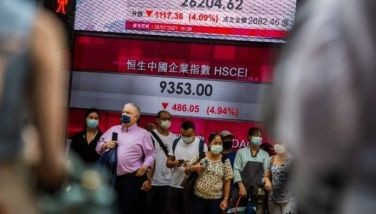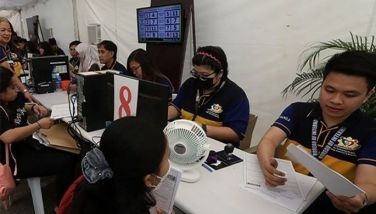Numbers behind power crisis

We had a good and brave briefing last Monday from ERC chair Agnes Devanadera on the power situation during a regular meeting of the Foundation for Economic Freedom. The numbers she presented gave us a good idea why we are having red and yellow alerts lately.
The numbers tell us this crisis didn’t just happen now. Indeed, we had a similar crisis last year and it just got worse. This means, the DOE had a year to do something to mitigate the effects of the crisis… but did nothing.
January to March last year, we had a peak demand of 9,503 MW against an effective supply of 10,415 MW or a margin of 912 MW. January to March this year, we had a peak demand of 9471 MW against an effective supply of 10,285 MW or a margin of 814 MW.
The margins are above the 600 MW needed to cover the largest power plant in the system if it conks out, but are razor thin. Sual coal plant produces 600 MW per plant or 1200 MW for the two plants.
If both plants conk out or one other big plant goes off-grid, the Luzon power grid is in trouble. NGCP will have to shed load to protect the other plants in the system. Those red and yellow alerts advise consumers to curtail their demands on the grid and the bigger consumers to use their own generators.
Here are more numbers: In 2018, a total of 73 trading hours were placed under the yellow alert status and 15 trading hours on red alert status. Consumers end up paying more because the system buys from the spot market.
Those numbers, however, do not tell the whole miserable story.
In February last year, our percentage reserves were five percent of peak demand. In March, it was just two percent. In April it was minus one percent, more demand than the system could supply. It didn’t get better until August when it was at 14 percent.
This year, it was eight percent in February and three percent in March. We don’t yet have the data for April which promises to be bad based on the shortages we have experienced.
Other numbers we ought to consider include the age of the power plants. A high 72 percent are 16 years old and above. Power plants that are 16 years old and older account for 62 percent of outages.
Interestingly, the ERC chart also showed that newer plants age 0 to five years old also had a rather high incidence of outage. We joked on the sidelines that the newer plants are probably made in China. Some are.
I don’t know if we can assume DOE planners had those numbers because with DOE, we cannot assume competence. If they did, why didn’t they do something?
Given that the solutions are long term, it takes five to six years to build a power plant, they could have warned the public by January to start an energy conservation habit.
ERC was blamed for not acting more expeditiously on Power Supply Agreements (PSA) applications and as a result, delayed building those power plants. But as chair Devanadera explained, none of those pending before them would have delivered any power to help us this year.
Many are expected to deliver power in 2021, which still means we will be short of power for a while. Delivery dates of power plants are iffy because of the tedious process of getting government approvals and permits. That’s why ERC doesn’t get a free pass for nursing an approvals backlog.
From the way chair Devanadera explained it, the law gave ERC a lot of responsibilities. But they do not have the right number of qualified staff to properly process all the applications they receive.
They have 85 pending cases covering 53 plants and 14 technical staff to evaluate all those before the ERC can decide en banc. It takes 90 to 180 days to evaluate a case.
We only see their function of setting rates and tariffs. The ERC also has to approve proposals to make capital investments from utilities that end up in our electricity bills. They only have 10 technical staff assigned to evaluate highly technical proposals.
They have other responsibilities: ensuring consumer choice, promote competition, encourage market development, and penalize abuse of market power.
Obviously, most of the other functions are neglected as ERC works double time to deal with rates and supply contracts. It didn’t help that most of the commissioners were suspended and it is only recently that it is a full commission again.
Given the technical nature of their work, they need a lot of good utility economists, engineers, and data scientists on staff. They also need a good computer system to make the work less tedious and enable them to produce more dependable results.
It is not impossible for an important government agency to get the proper staff. The Philippine Competition Commission was able to get the high caliber technical staff they need. The BSP or the Central Bank has top notch economists and other technical staff with compensation packages competitive with the private sector.
Then again, ERC can also change its methods. Deciding cases plant by plant is tedious. With the Competitive Selection Process in effect, they probably don’t need an army of internal staff, if the process is done right.
But given ERC’s recent credibility problems, the lawyers in the commission may insist on the current legalistic approach which is cost based evaluation. They can probably do better by looking at efficiency and market competition. I understand EPIRA allows alternative methods of regulating the industry.
ERC is important enough for policy makers to think again why we need this agency and how best it can do its mandate. Otherwise, it will stifle our economic growth because we won’t have enough power.
Boo Chanco’s e-mail address is [email protected]. Follow him on Twitter @boochanco
- Latest
- Trending































